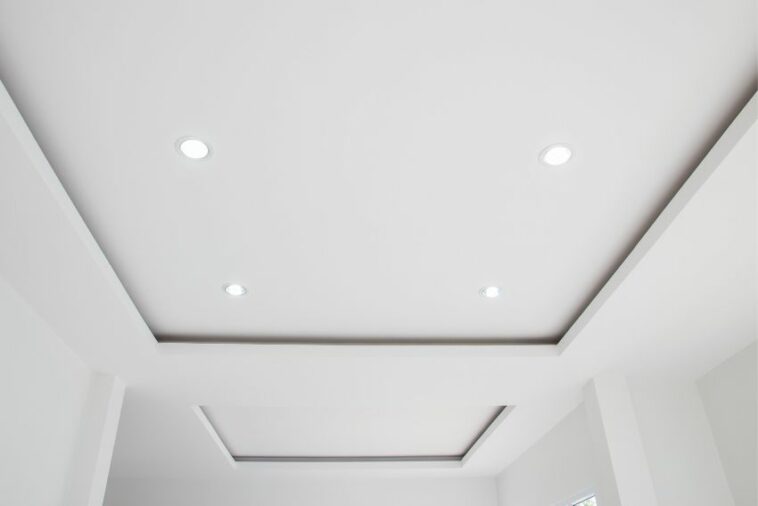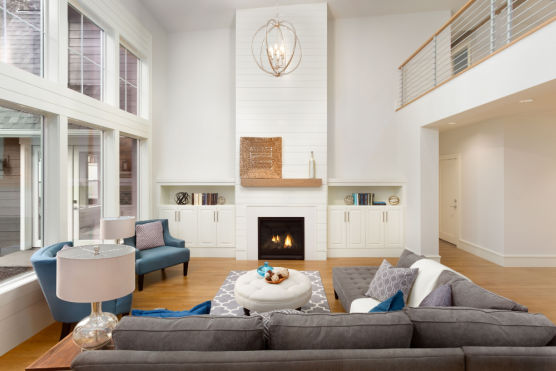This Post may contain Affiliate Links. Please read our Disclosure for legal jargon.
Are you designing your dream home? Chances are that ceilings have always been an afterthought.
But you would be surprised to know the functions of a ceiling beyond just a finishing touch to any room.
You can have different types of ceilings for various utilities. More importantly, ceilings can drastically change the look and feel of a room.
And to make things easier, I have compiled a list of different types of ceilings. You can now design your home stylishly, without compromising on functionality.
Outline
The 35 Different Types of Ceilings
1. Conventional Ceiling
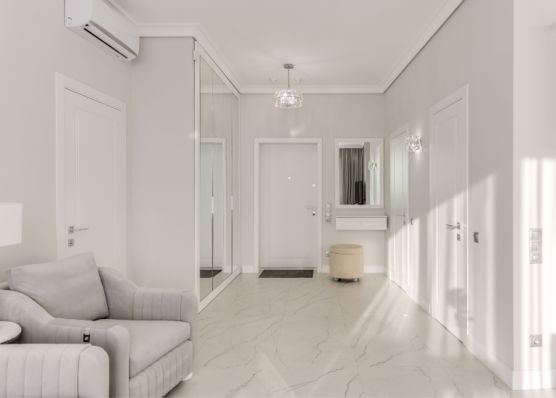
The most common form of ceiling seen in residential spaces, the conventional ceiling is an economical and functional choice for many.
Usually 8 to 10 ft. high, they are finished with a layer of construction materials like plaster or drywall. Conventional ceilings can be made taller for a room that feels more spacious, or slightly shorter for a cozier ambience. These ceilings are cheaper but extremely minimal.
2. Domed Ceiling
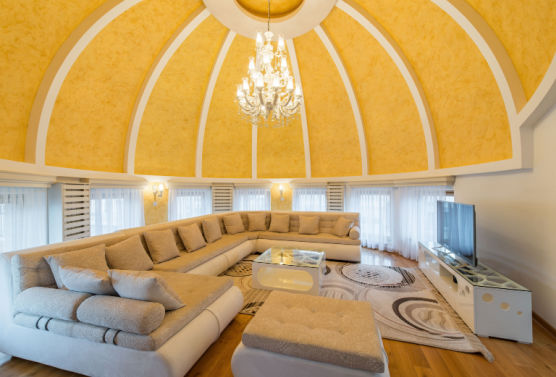
Resembling an inverted half sphere, the domed ceiling is excellent at creating an illusion of more space. They can be constructed in focal parts of the home like the entryway, living room, the lobby, etc.
Domed ceilings can accentuate the height and size of a room and are customized with the help of decorative wall paintings, skylights, chandeliers, and so on.
3. Cathedral Ceiling
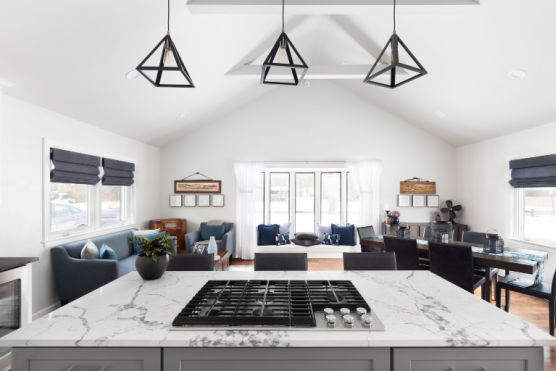
Cathedral ceilings are characterized by two symmetrical or equal sides sloping down from a central axis point in the middle of the room to create an inverted V-shape.
This apex is the highest point in the room, creating a spacious look for your room. Cathedral ceilings are made from wood and can help elevate the overall design of a home. However, they come with a lot of hassle over maintenance and cleaning.
4. Drop Ceiling
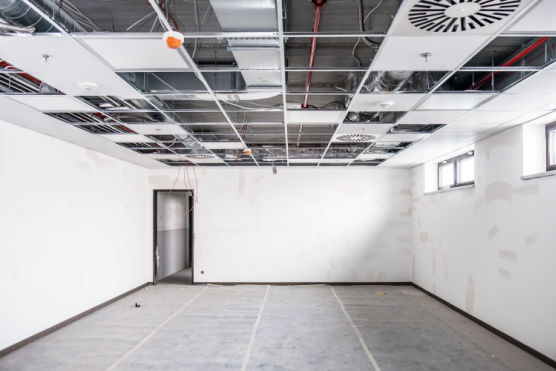
A drop ceiling is so-called because it is a fake ceiling that hangs from metal grids about six inches off of the actual ceiling.
Found mostly in commercial areas and retail stores, drop ceilings are meant to hide systems and inner-workings of the building which might not be visually appealing.
Everything from centralized air conditioning, to wiring, lighting, water pipes, ducts, and so on can be obscured by a drop ceiling. They also aid in acoustics by muffling noises.
5. Suspended Ceiling
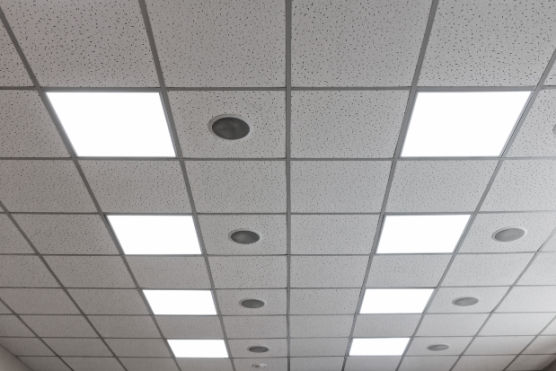
Suspended ceilings function the same way as drop ceilings. The key difference between the two is the fact that the former uses tiles and panels, unlike the latter which uses metal sheets.
Suspended ceilings operate the best when kept away from moisture, dust, and other elements.
6. Coffered Ceiling
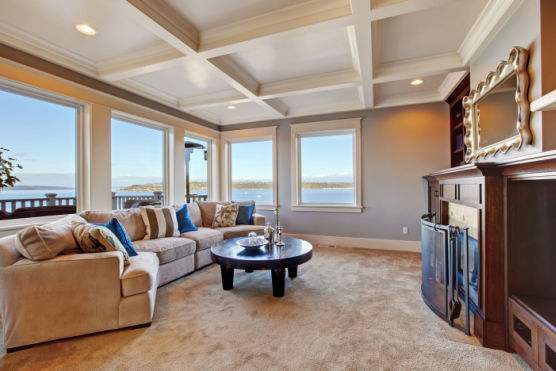
Originating from Ancient Greek architecture, coffered ceilings are the definition of luxury and aesthetics. Coffered ceilings are best for tall rooms and wide ceilings, such as public buildings and luxurious homes.
Coffered ceilings are characterized by a grid of geometric shapes like the square, that is sunken-in. They can be further accentuated through intricate molding and artwork.
7. Vaulted Ceiling
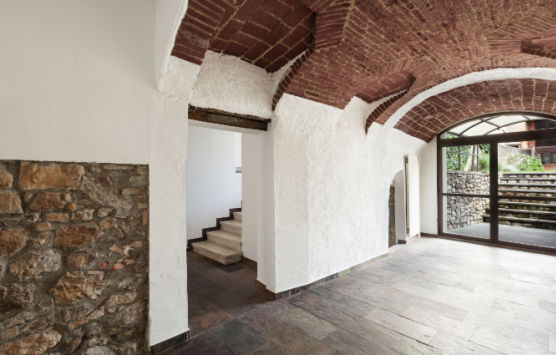
Vaulted ceilings are similar to cathedral ceilings, as they both have sloping sides descending from an apex in the middle of the room. The difference between the two is the fact that the apex is rounded and the sloping sides aren’t symmetrical in vaulted ceilings.
Like cathedral ceilings, vaulted ceilings can help create more space in your room and add some personality to an otherwise empty room.
8. Barrel Vault Ceiling

The barrel vault ceiling consists of a series of concave arches that runs across the entire length of the room. These ceilings are so-called because they resemble an inverted cross-section of a barrel.
Apart from giving any room a sense of space and brightness, barrel vault ceilings have acoustic applications like amplifying sound beautifully.
9. Tray Ceiling
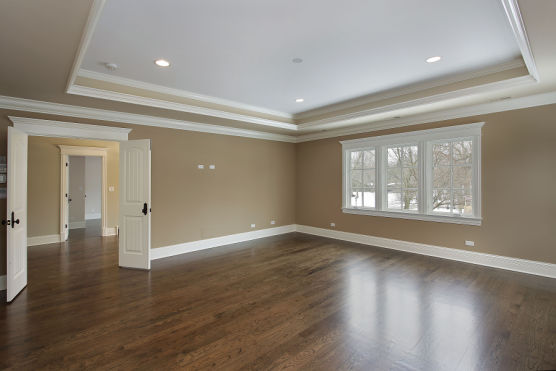
If your ceiling is too low for a vaulted ceiling, you can create the illusion of height with tray ceilings. These ceilings get their name because they look like inverted trays.
Tray ceilings are conventional ceilings with a recessed portion in the middle that goes about a foot higher.
These recesses are constructed in multiple levels, sometimes 3 to 5 levels with a difference of 5 to 10 inches between each one. Tray ceilings usually are made with veneer sheets or plywood panels.
10. Tin Ceiling
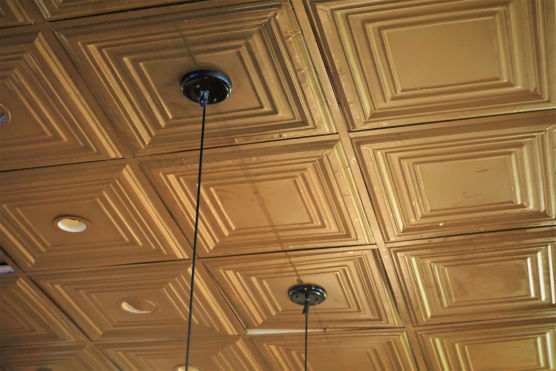
Tin ceilings were all the craze in the 1920s. It is no longer seen in modern houses, but it had a range of benefits which was alluring for homemakers at that time.
Tin is resistant to rust, damage from open-fire cooking, and is lightweight which makes it easy to install. Beyond this, tin ceilings would come in several repeated motifs and decorations, as well as colors.
11. Coved Ceiling
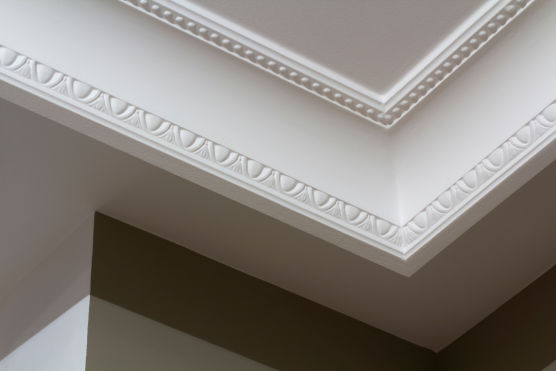
Coved ceilings are created to form a dome-like effect in the place where the ceiling and wall meet. This design takes inspiration from Middle Eastern architecture and is used to elevate lighting fixtures.
Apart from an elevated ceiling, coved ceilings can lend a particular softness to the room, making the room more visually pleasing.
12. Beamed Ceiling
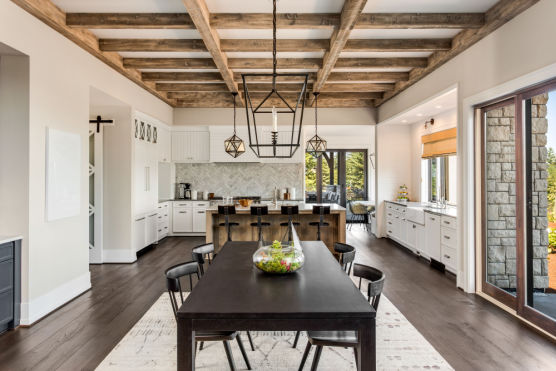
Traditionally, wooden planks were used as beams to support the roof above. However, modern homes keep beams exposed on ceilings as an aesthetic addition.
These faux beams are usually made from plywood, metal, concrete, etc., and give a rustic look to your rooms. There can be as many beams as you prefer and can be incorporated into both flat and vaulted ceilings.
13. Shed Ceiling
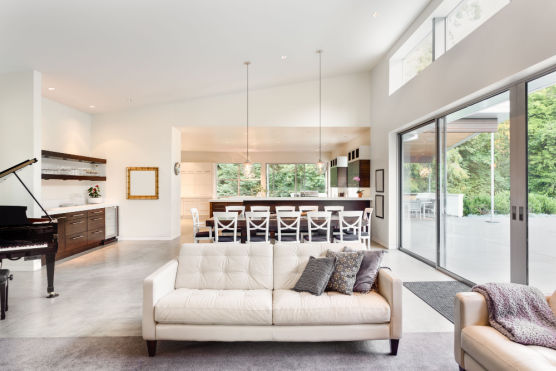
The oldest and simplest form of a ceiling, the shed ceiling still holds strong in the modern age.
A shed ceiling is a form of a vaulted ceiling. The difference between them is that shed ceilings just have one downward slope, starting from the high point of one wall and ending on the opposite wall.
This slant makes room in otherwise cramped areas like attics and allows utilities like windows and solar panels to be installed.
14. Exposed Ceiling
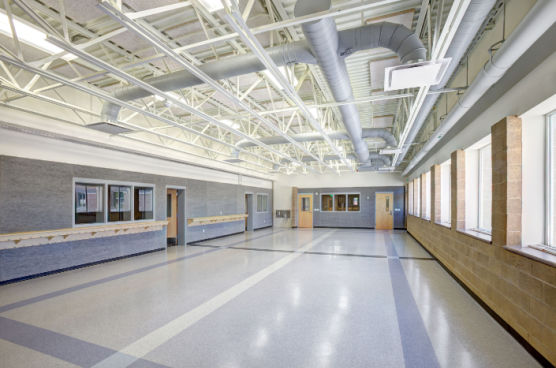
On the exact opposite end of drop ceilings, we have the exposed ceiling. A favorite among modern interior designers, the exposed ceiling does not cover up the various ducts and wiring with drywall.
Exposed ceilings look the best in wide open spaces, and can lend your living or commercial space an industrial look.
15. Groin Vault Ceiling

Possibly the most dramatic ceiling type, the groin vault ceiling is intricate as well as beautiful to look at.
Made with four curves meeting at one central point in the room, groin vault ceilings require an immense amount of precision to pull off. What you get is a ceiling that will surely “wow” anyone walking in, as well as give you more space in your room.
16. Tall Ceiling
A tall ceiling is a name that is given to any ceiling that is constructed past the 8 ft. mark. They can be incorporated into double-story houses and bungalows which have huge rooms.
Tall ceilings are usually double the height of regular ceilings, and give a lot of room for decorations and open space in a room. However, keeping rooms like these heated or cooled can be considerably more expensive.
17. Sloped Ceiling
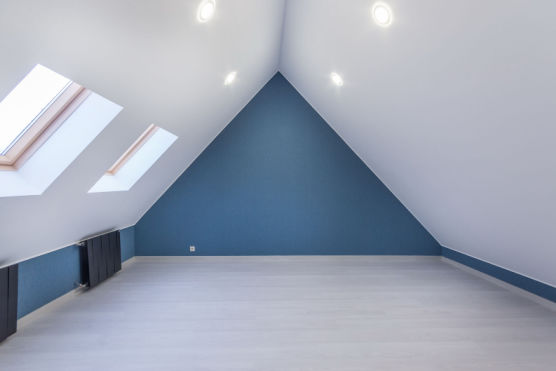
A sloped ceiling is made in a room where two sides of the roof meet together at a singular point. Thus, this creates a comfy room right under the roofline, especially in the attic.
Unlike vault ceilings, these slopes can be slanted, angled, or curved, depending on the architecture of the house.
18. Acoustic Ceiling Tiles
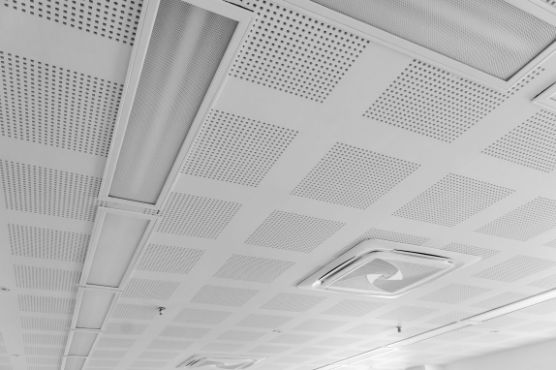
Acoustic ceiling tiles, like the suspended or drop ceiling, can be arranged in patterns on a grid for better sound absorption.
These tiles are usually made from fiberglass, wood, foam, polyester, and so on.
19. Cloister Ceiling

Also called a pavilion vault, cloister ceilings are four concave surfaces with the same meeting point in the center.
Its spherical center looks like a dome, with cross sections running at right angles. A complicated architectural wonder, cloister ceilings are most commonly seen in naves, the central area of the church for praying.
20. Knockdown Ceiling
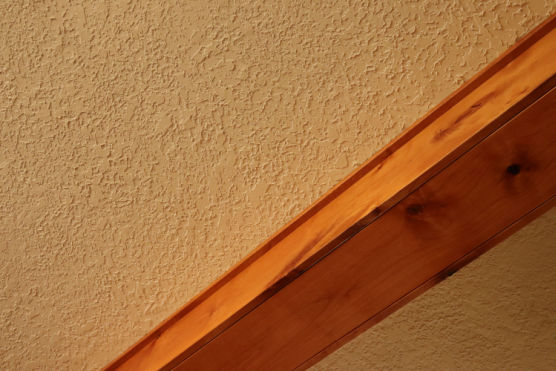
Knockdown ceiling refers to the knockdown finish which is popular among many house owners.
Made by splattering drywall compounds in different techniques, you only need to raise small stalactite-like peaks and even it out with a knockdown knife. Not only does this look visually appealing, but it also mutes out a lot of sounds.
21. Tongue and Groove Ceiling
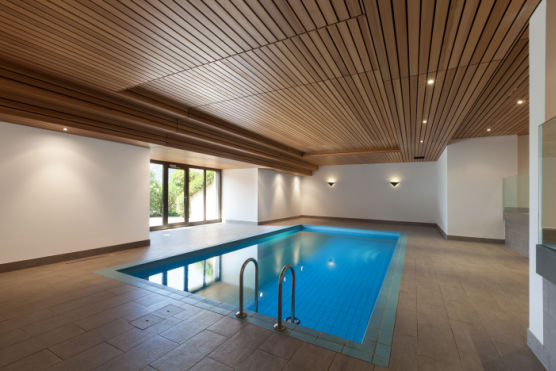
A common technique used in older homes, the tongue and groove ceiling is made up of interlocking wooden planks placed asymmetrically.
Tongue and groove ceilings are perfect to evoke a rustic and traditional feel in your room. These planks are usually made from plywood or hardwood.
22. Popcorn Ceiling
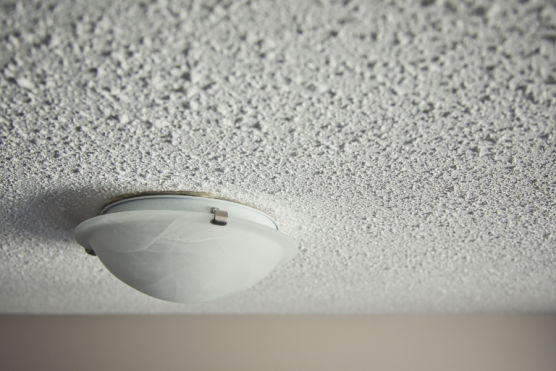
Largely an outdated form of a knockdown ceiling, the popcorn ceiling was used to create a similar effect and acoustic controlling properties.
This look is achieved through various spray-on or paint treatments using synthetic polymers. Besides muffling sound, this kind of ceiling can cover up faults.
23. Shadow-line Ceilings
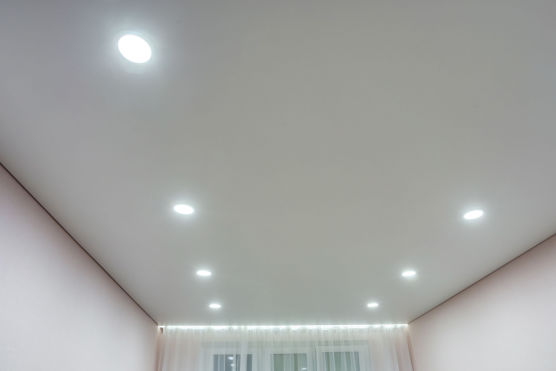
Shadow-line ceilings are a very minimalist approach to creating a particular atmosphere and personality in your room.
This kind of ceiling is achieved by using a steel angle at the junction where your ceiling and wall meet. This results in a very particular “shadow” being cast around your ceiling, giving your room an illusion of height and width.
24. Shiplap Ceiling
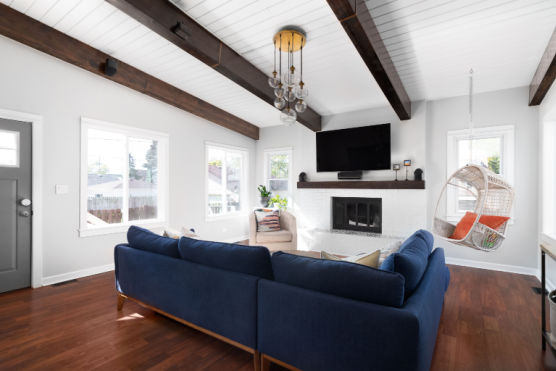
Shiplap ceiling is a form of roofing material, seen mostly in traditional-style houses. It is made by using planks of wood laid side-by-side and held together using special seams called rabbets.
Shiplap ceilings can cover up popcorn ceilings and other architectural mistakes. These types of ceilings don’t have a lot of functional advantages and are purely for aesthetic value.
25. Specialty Moldings
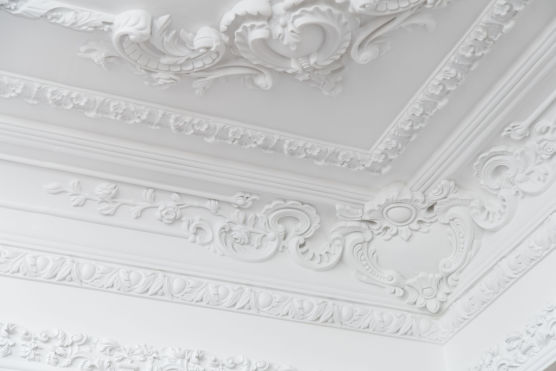
This kind of ceiling refers to the intricate sculpting work and designs done on Victorian and Neoclassical-era houses.
A very popular trend amongst eccentric designers has been to combine traditional design work like this with modern techniques.
26. Drywall Ceiling
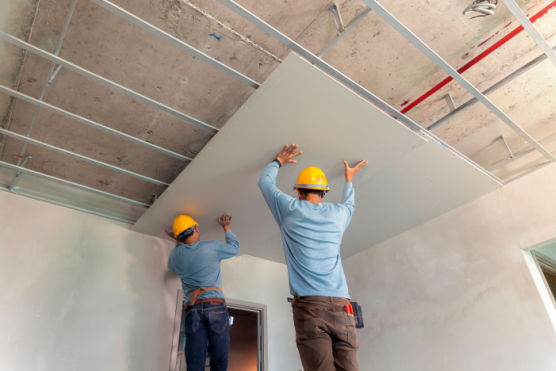
Drywall ceilings might be plain, but they are certainly economical and give free rein to design your ceiling your way.
Drywall ceilings are made by pressing different materials to form large sheets. These sheets are put in place, dried, and have molds pressed into them. This makes a blank but complete-looking ceiling.
27. Plaster Ceiling
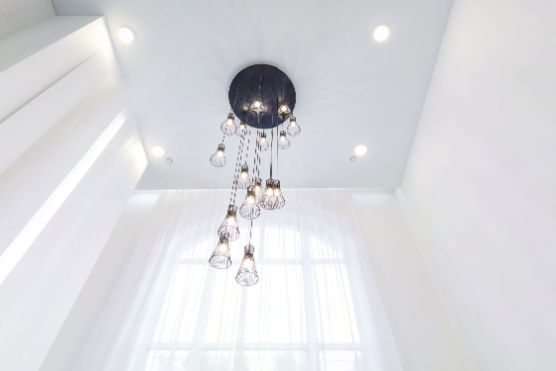
An older technique that has been replaced by drywalls, plaster ceilings have been in use for centuries.
Plaster ceilings provide a durable surface to add creativity to it. However, these ceilings are best suited for conventional flat ceilings.
28. PVC Ceiling
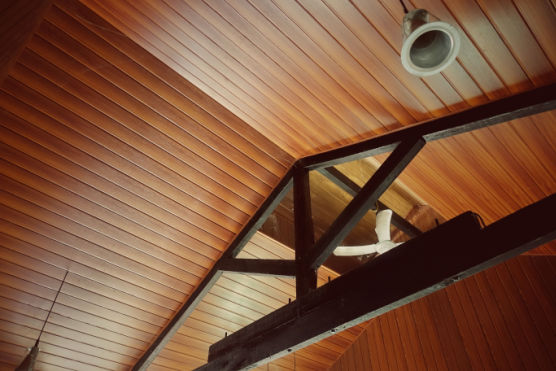
PVC ceilings utilize lightweight and versatile PVC material to make wood-like finishes that come in many colors.
PVC ceilings are durable, affordable, and highly customizable according to your personal preference.
29. Faux Tin Ceiling
If you want to bring back the glamor of tin ceilings from the 1920s, you have the option of using faux tin ceilings.
Faux tin ceilings get their glossy look from the mixture of metal and plastic sheets. However, the drawback you’ll face is that they aren’t insulated.
30. Vinyl Ceiling
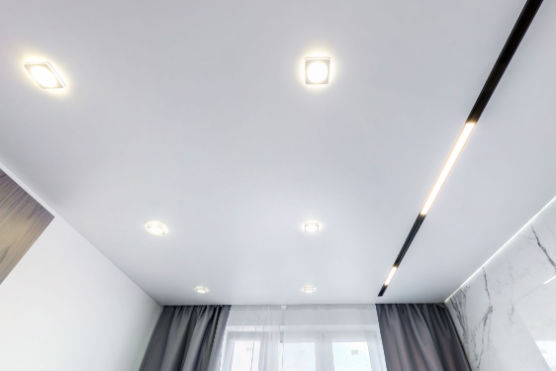
Vinyl ceiling tiles are lightweight plastic tiles that come in different sizes and look.
Vinyl ceilings are perfect for both commercial and residential spaces and are affordable, highly customizable, resistant to humidity, and easy to maintain. Moreover, you can always choose to paint over them according to your personal preference.
31. Metal Ceiling
You might have guessed by now, that metal ceiling tiles are made from metal. They are extremely versatile, being a functional choice in any room.
Their plastic coating on the surface means they are incredibly durable, and you don’t even need to paint them. Metal ceilings also have insulation properties which means they are energy efficient and help you stay cooler.
32. Plywood Ceiling
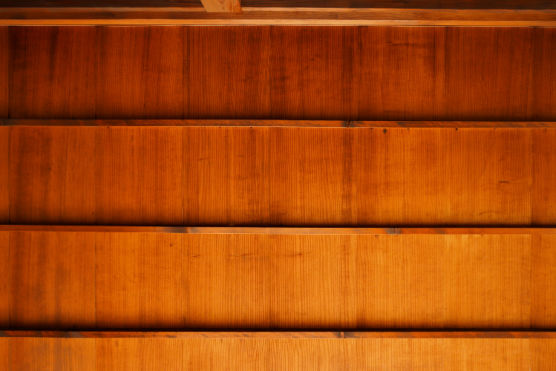
Plywood is a material that is easy to install and remove, making maintenance incredibly easy.
Plywood is strong and durable enough to hold up the weight of a room while giving the room a rustic and traditional look. Plywood also helps in soundproofing.
33. Styrofoam Ceiling
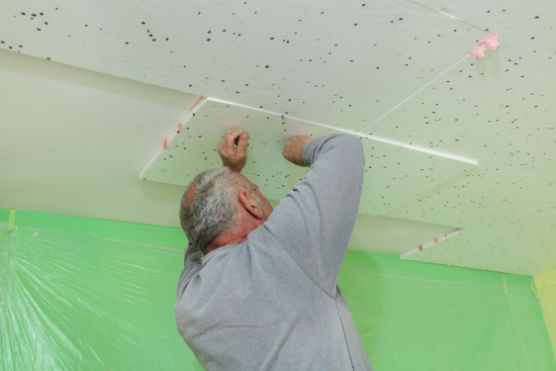
Like plywood, Styrofoam is incredibly easy to install, and affordable as well.
The main advantage of using Styrofoam is its insulating property. And this goes for both noises as well as thermal insulation. There is a drawback to Styrofoam ceiling tiles, which is that they catch fire very easily.
34. Glue-Up Ceiling
Glue-Up ceiling tiles make it easy for you to get the type of ceiling you really want. These tiles are heavy as they are made of metal.
Although they can be hard to take off if you want to eventually change the decor, this has to be your best option to disguise cracks in your ceiling.
35. Beadboard Ceiling
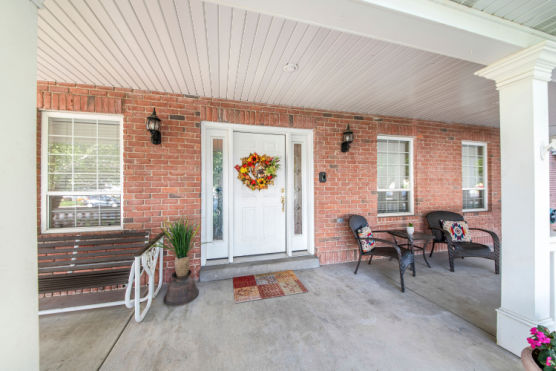
Beadboard ceilings are long vertical grooves on planks of wood with raised beads to give the illusion of multiple planks of wood stacked next to each other.
What makes beadboard ceilings popular is the fact that they are incredibly affordable, give a formal look to the entire room, as well as keep the room insulated.
When you’re on the monumental task of building or planning your new home, there is no reason to skip important details. The way a ceiling looks or functions is just as important as any other element of your house.
With this article, you get a comprehensive idea of all the types of ceilings, giving you free access to experiment and customize your dream home!

